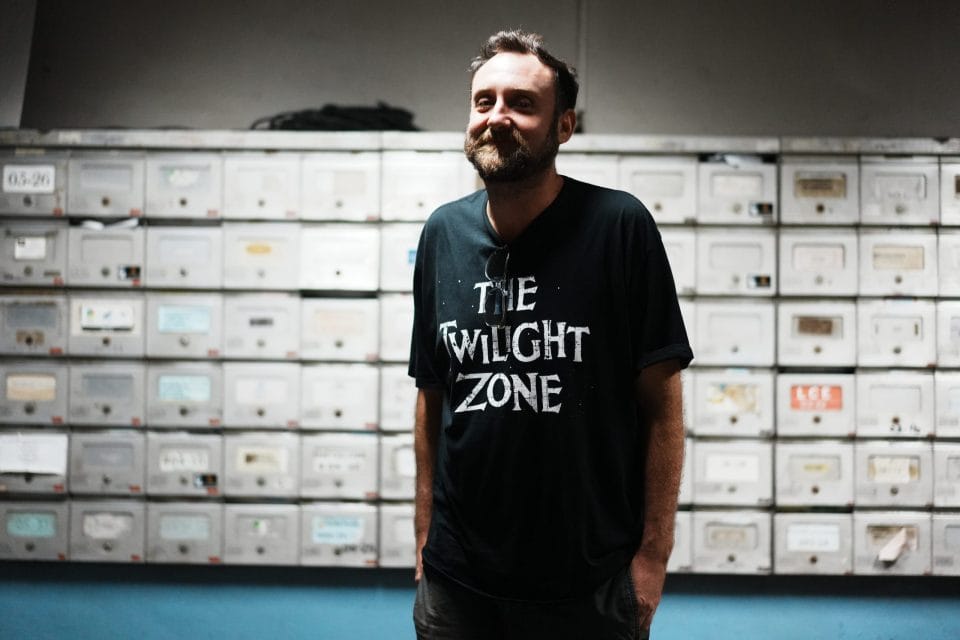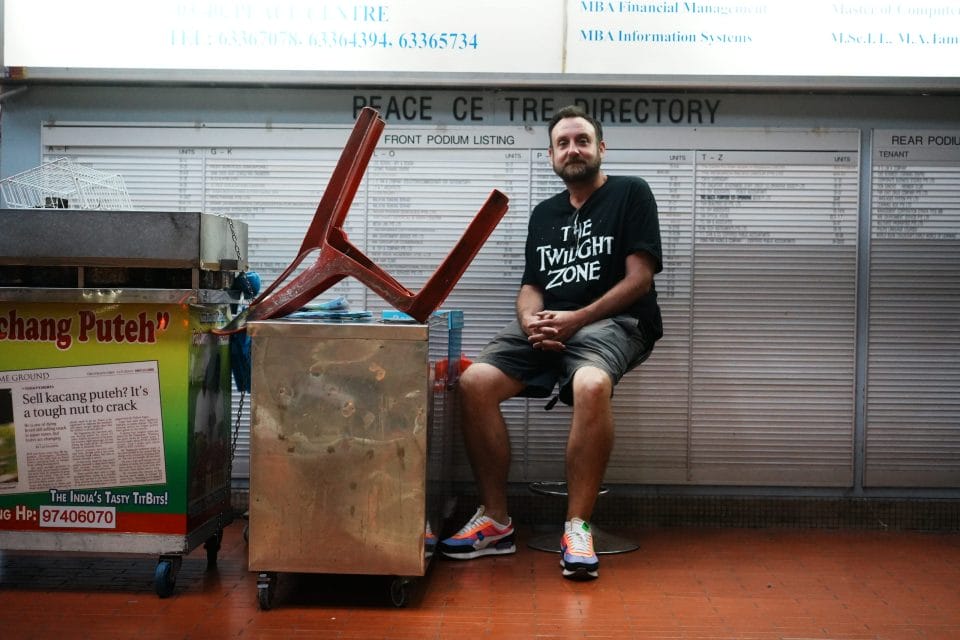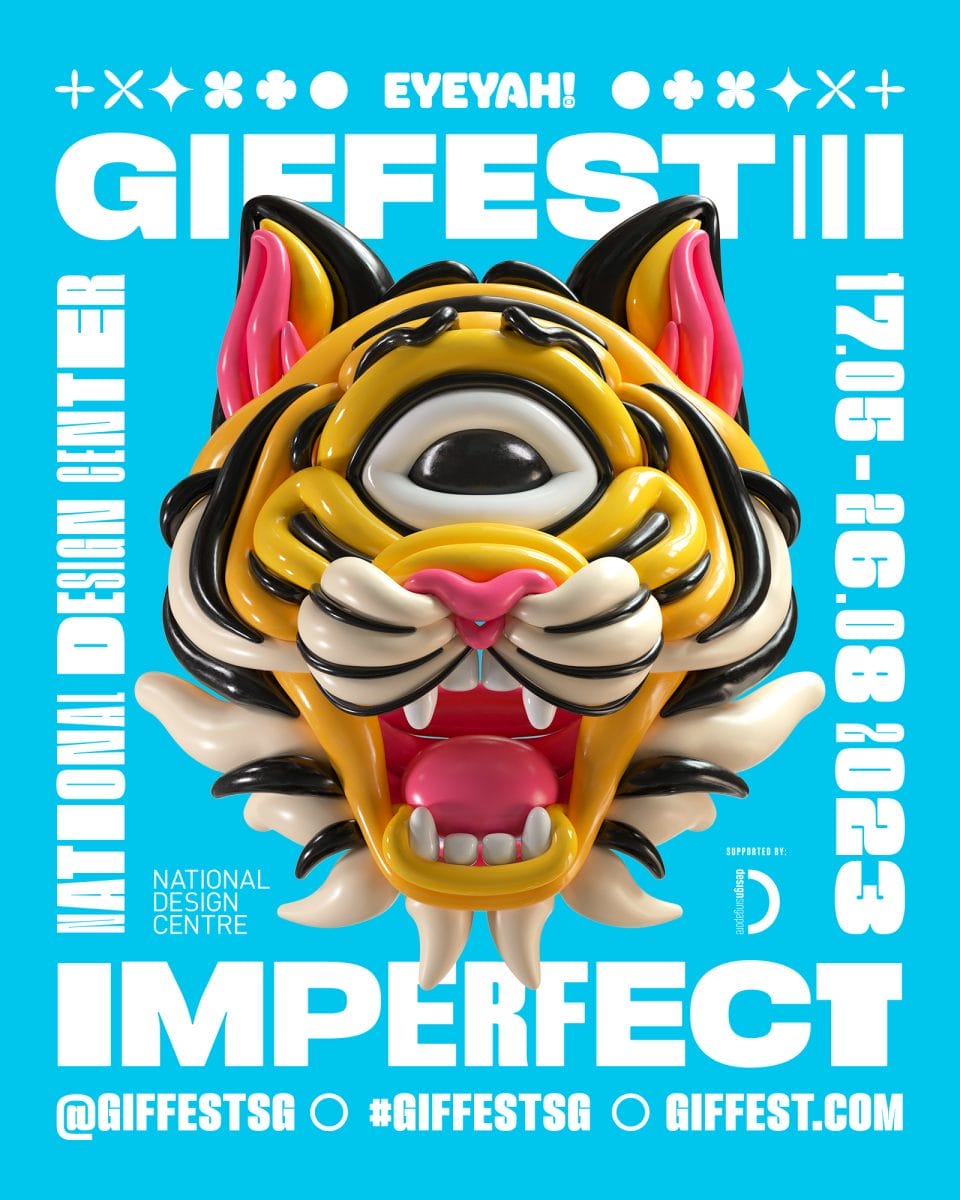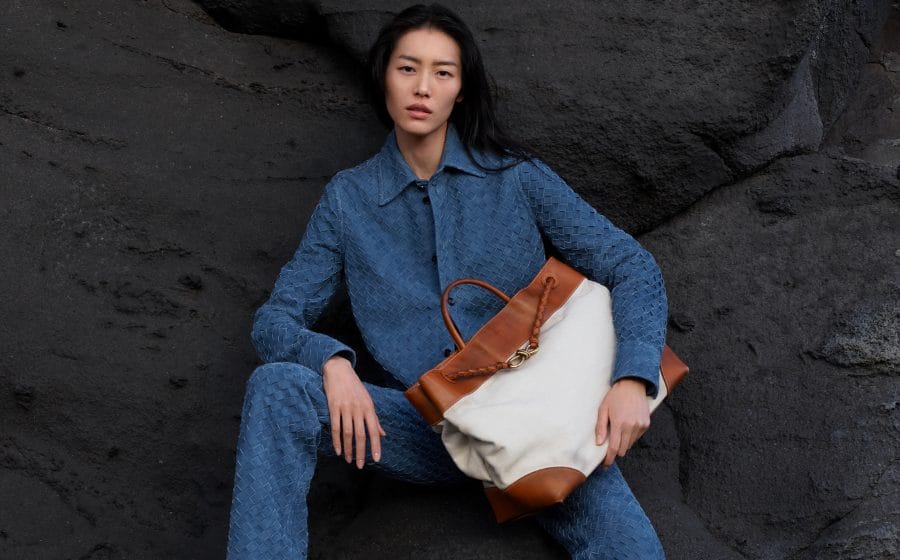 For a multi-hyphenated individual like Steve Lawler or MOJOKO, it’s hard to define (in its true entirety) what he does for a living. Or maybe, because he is a visual artist, designer, curator and creative director, this resistance to being defined in a limit of 10 words is only a given.
For a multi-hyphenated individual like Steve Lawler or MOJOKO, it’s hard to define (in its true entirety) what he does for a living. Or maybe, because he is a visual artist, designer, curator and creative director, this resistance to being defined in a limit of 10 words is only a given.
While born in the Middle East, raised in Hong Kong and educated in Europe, Steve has lived in Singapore for 20 years, and is undeniably a true blue local creative. He has seen our young creative scene bloom and has contributed greatly to the scene as well. After launching multidisciplinary creative studio Kult Studios in 2007, he went on to found EYEYAH! magazine, which is a platform that uses art and design to teach children about social issues, before conceiving The Unusual Network — a network for artists to connect and showcase works. This year, he adds the third rendition of GIFFEST — an exhibition that he co-founded and is dedicated to celebrating GIFs — into his already massive portfolio.
Returning after a four-year hiatus, GIFFEST is now exhibiting at the National Design Centre from 18 May to 26 Aug — the longest duration ever for the festival. Partnering with Steve’s other brainchild, EYEYAH!, this year’s edition promises yet another blockbuster experience lensed through the title’s thought-provoking visual approach to deconstructing social topics. Here, we speak to the Curator of GIFFEST and Co-founder of EYEYAH! about the organising such a feat, Singapore’s creative scene and how it’s small island has influenced his work.
 Hi Steve, can you describe yourself in 10 words or less?
Hi Steve, can you describe yourself in 10 words or less?
No.
After living in Singapore for more than a decade, what are some things that you come to love about the country, and alternately some things you dislike?
I’ve lived in Singapore since 2003, so it has been 20 years on this tropical island. It is a rare example of an island with such high productivity. It’s hard to name anywhere else that is almost as tall as it is wide. Personally, I’m not glamoured by the shiny buildings and 5-star hotels, but rather by the quiet, quaint corners that can be found. The untouched parts of the island, which have been ignored by developers and technology, are what give this place its character and soul.
How do you think Singapore has influenced your work?
The rich heritage of mixed cultures in Singapore is a constant source of inspiration for me. It’s a highly modern city in that respect, a futuristic metropolis that serves as a melting pot for diverse cultures, constantly evolving and transforming. My work always reflects the world around me and how I perceive it, the juxtapositions of old and new, East and West, fake and real. They are what catch my eye, and imagination.
Being a multi-hyphenated individual, are there other artistic practices you would like to give a go?
Can someone let me design their swimming pool please?
View this post on Instagram
As a curator, what are some other exhibitions that have inspired you recently?
To be honest, I’ve been quite unsatisfied with the shows I’ve been to recently.
You founded EYEYAH magazine in 2017, a publication that aims to nurture a generation of socially and environmentally conscious earthlings. What led you to pursue art that leads to social change?
I used to work in advertising and collaborated with numerous talented individuals. It quickly became apparent that their abilities were being underutilised. This realisation prompted the question, ‘Imagine if these individuals were working on something that had deeper meaning?’ What if we could tap into the same talent that makes global brands look good and harness that power for education, using advertising techniques and visual communication to address social issues? This idea became immensely appealing, and thus ‘EYEYAH!’ was born.
What was the catalyst that made you create GIFFEST?
It was always a dream of mine to put together a multimedia exhibition that focused on animation and video art. We have always had a deep appreciation for low brow art, such as street art, illustration, underground art shows, and all things weird. Thus, the idea of a GIF show had been on my mind for quite some time until the National Arts Council (NAC) and their NOISE program issued a call for proposals. They loved the idea, and that’s how GIFFEST began.
 After a four-year hiatus, GIFFEST finally makes a return. What were some developments that you were excited to explore with this year’s exhibition?
After a four-year hiatus, GIFFEST finally makes a return. What were some developments that you were excited to explore with this year’s exhibition?
This year, we merged EYEYAH! with GIFFEST, infusing a stronger social message into this year’s instalment. By exploring the theme of IMPERFECT, artists challenge our assumptions about what is considered perfect.
Are there any lessons from the first two GIFFEST which you applied in this GIFFEST? How did you approach curating this year’s GIFFEST and were there any hurdles?
Yes, each time we do the show, we build on our learnings. This year presented a new set of challenges since it is not in a dark space, which means we were unable to use projectors and the magical effects they can create. Instead, all the artwork is displayed on screens, and the environment is designed for viewing during daylight hours in the wonderful National Design Centre Atrium. Oh, and we learned from last time that people absolutely LOVE bean bags; they sometimes stay for hours, completely hypnotised by the GIFs.
The theme for this year’s GIFFEST is IMPERFECT. How did that come to be and how has the theme been incorporated within the exhibition?
EYEYAH! has always been driven by social ideas. The theme of IMPERFECT emerged as we sought a theme that would encompass straddled both design and society. In terms of design, imperfection is a key aspect of the creative process. Without mistakes and experimentation, it is unlikely for improvement or new ideas to arise. Additionally, we were deeply interested in IMPERFECT as a societal notion, particularly exploring the pressure of perfection and its impact on the mental health of young people.
View this post on Instagram
Talks of AI have been prevalent recently, how has it been incorporated within the exhibition?
Several of the creatives in the showcase have utilised AI as part of their creative process. It is hard to tell which ones, but it is fair to say they have mastered the imperfections that AI is currently ridiculed for. I believe that many creatives are now beginning to dabble with this technology, and as a result, we can expect to see its increased presence in both the commercial and cultural sectors.
The mission statement for this GIFFEST is that “imperfection is not only acceptable but also an integral part of life.” How has this resonated with you?
It is important for us to create work that doesn’t feel too preachy. We aim for our guests to enjoy themselves while simultaneously grasping the main concepts the show presents – the idea that it’s okay to be imperfect, and in fact, it can greatly benefit you if you allow it to. Personally, I intentionally make mistakes in my own creative process to explore new routes and generate fresh ideas. Designers and creatives often stifled by their own parameters set upon themselves. However, by loosening up, they can break free from traditional and restrictive thinking.
What can you share about any upcoming projects that you are working on?
We are launching a series of ATMs for EYEYAH! that will showcase nine animations designed to help kids learn about MONEY. These ATMs will be touring schools and libraries in the coming months, with a special launch event at iLight in June. Additionally, I am organising a solo show for my personal artwork under MOJOKO, which will be held in a secret room located in Chinatown. More details about the show will be announced on my Instagram account @mojokoworld.
Images courtesy of Jessie Lu (@jessierluer).
Visit GIFFEST III at National Design Centre, exhibiting from 18 May – 26 August. Admission is free, with workshop and talks that are available to sign up here. Once you’re done with this interview on Steve Lawler about GIFFEST, click here to catch up with our May 2023 issue.







